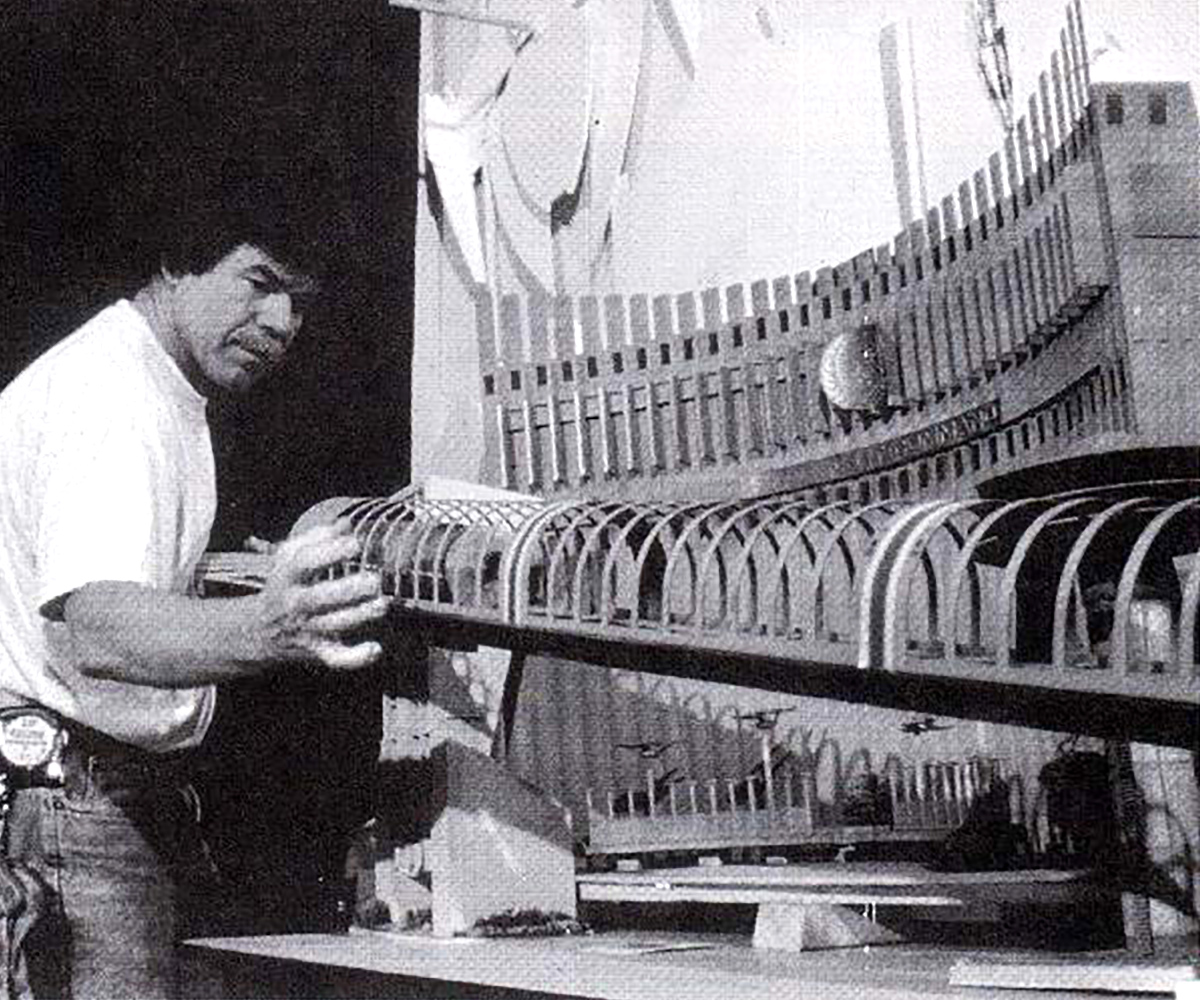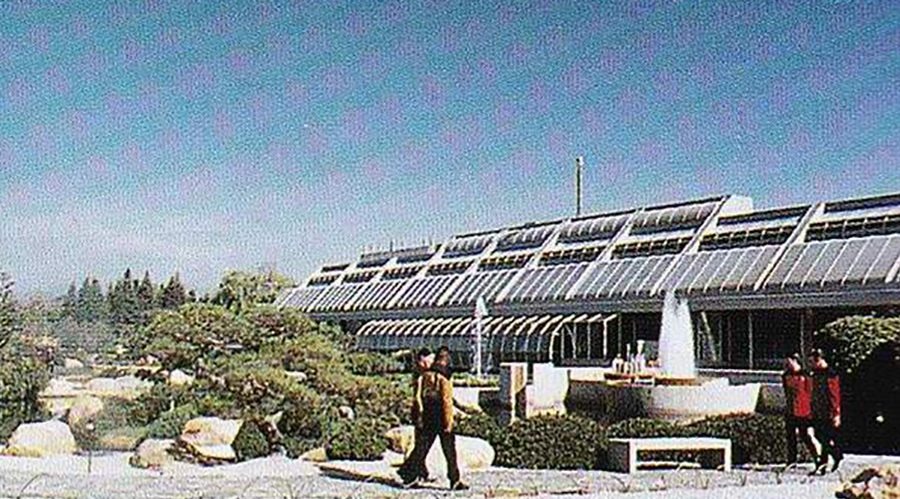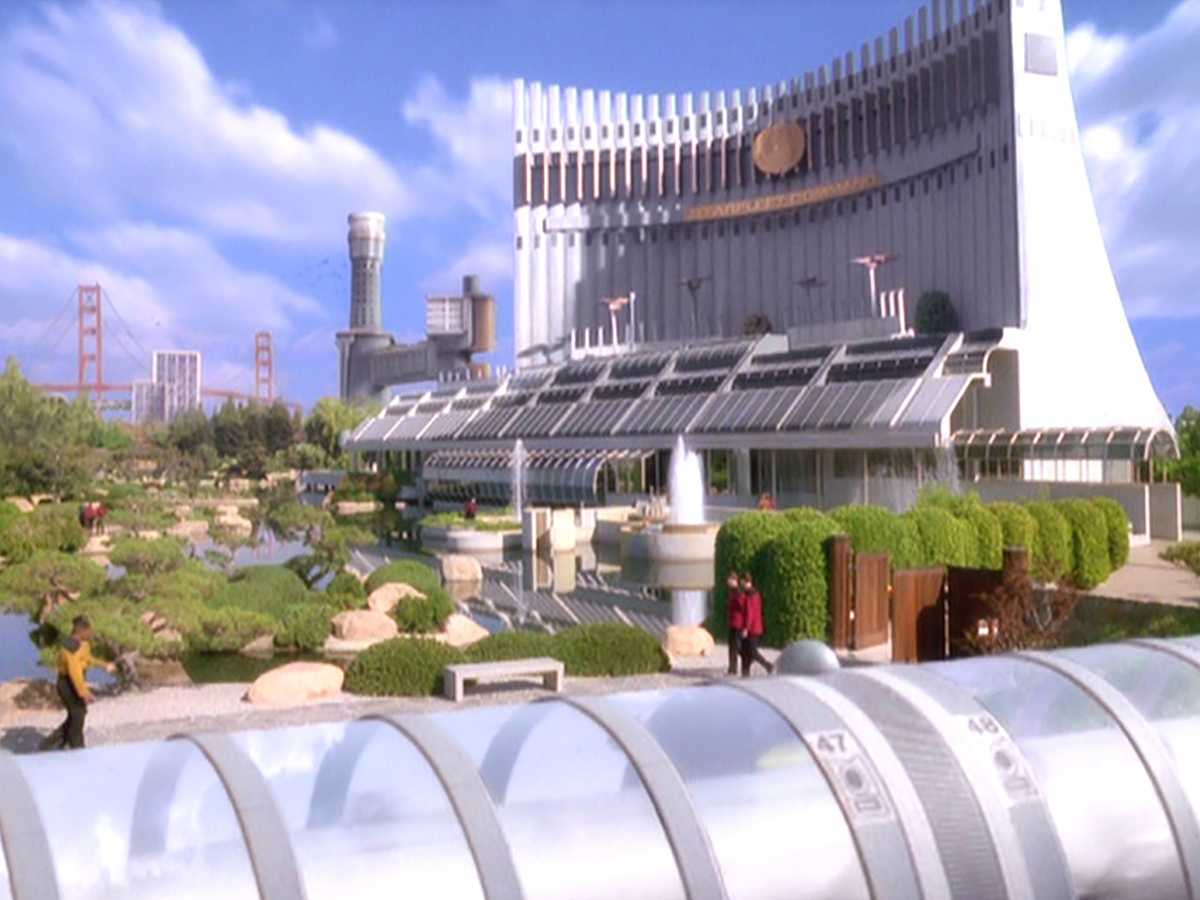Designing Starfleet Headquarters
The Original Series had occasionally referred to Starfleet Command and Starfleet Headquarters, but it wasn’t until Star Trek: The Motion Picture that fans got a glimpse of it.
Gene Roddenberry chose San Francisco as its location. Partly because the United Nations had been founded there in 1945, and partly because he considered the city an appropriate showcase for his secular humanist philosophy.
Roddenberry, who had shipped out from California to pilot Flying Fortresses in World War II, knew the Bay Area well.
The Motion Picture
Production Designer Harold Michelson told Fantastic Films in 1980 (My Star Trek Scrapbook has the full interview) that the original idea was to put the complex underground:
There wasn’t any more smog, the beaches were clean, and everything is absolutely marvelous.
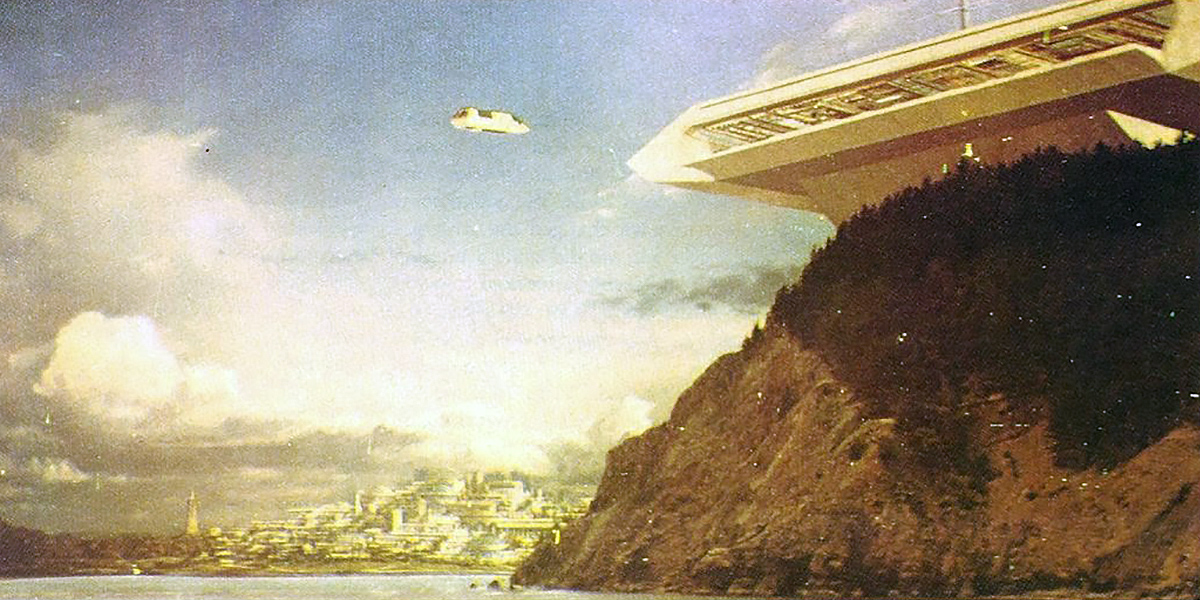
This seems to have come from a suggestion by Jon Povill, who was meant to serve as story editor for the aborted second Star Trek television series Phase II. He wrote a memo for that show, titled “23rd Century Earth: Context for Enterprise Crew,” in which he suggested that commerce, industry and transportation on Earth had all been moved underground.
The problem with that approach was that the audience wouldn’t recognize the city.
So what we used was the Golden Gate Bridge. It was a relic and was no longer in use. Everybody uses spaceships.
Director Robert Wise adapted the scene to include a couple of what he described to Cinefantastique in late 1979, just before the movie’s release, as “marvelous shots of the futuristic San Francisco.”
I felt it was extremely important, particularly since our story is supposed to start on Earth, be about the saving of Earth, before we go up to the heavens and never come back […] to emphasize the scene in San Francisco.
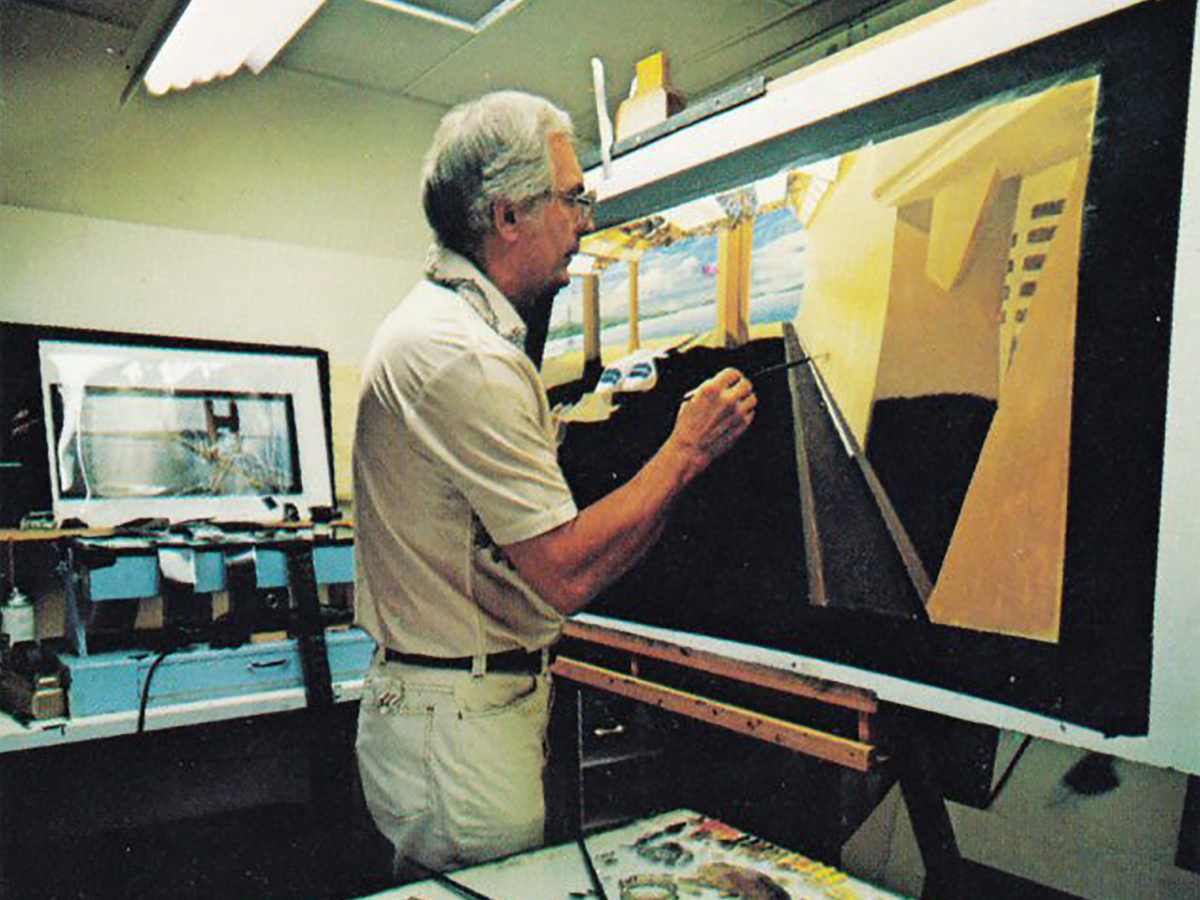
Michelson prepared storyboards showing the Enterprise — later replaced by Kirk’s shuttle — crossing San Francisco Bay parallel to the bridge and entering a massive opening on the side of the hill. That’s where it would undergo its refit.
The drydock was later — and more logically — put in orbit. The San Francisco facility became an air tram station where Kirk arrives in the beginning of the movie.
A large live-action set was built on Paramount’s Stages 12 and 14. Model elements of the air tram and lighting effects were added, and the rest was filled in by Matthew Yuricich’s matte painting.
Douglas Trumbull, head of visual effects, remembered the shot as a “nightmare,” telling Star Trek Monthly in 1999, “It took us weeks to perfect it.”
For the 2001 Director’s Edition, Visual Effects Supervisor Daren Dochterman lowered the wall on the right side of the frame and added more shuttles.
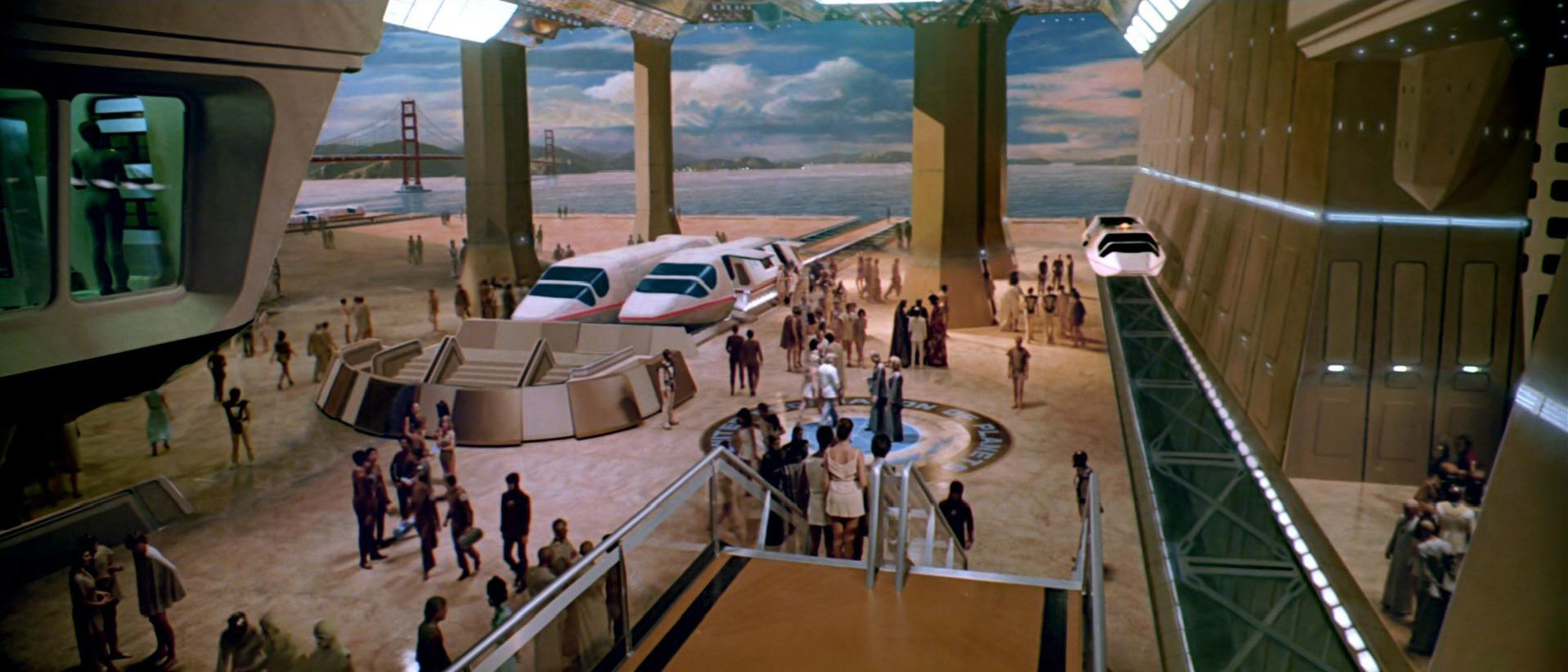
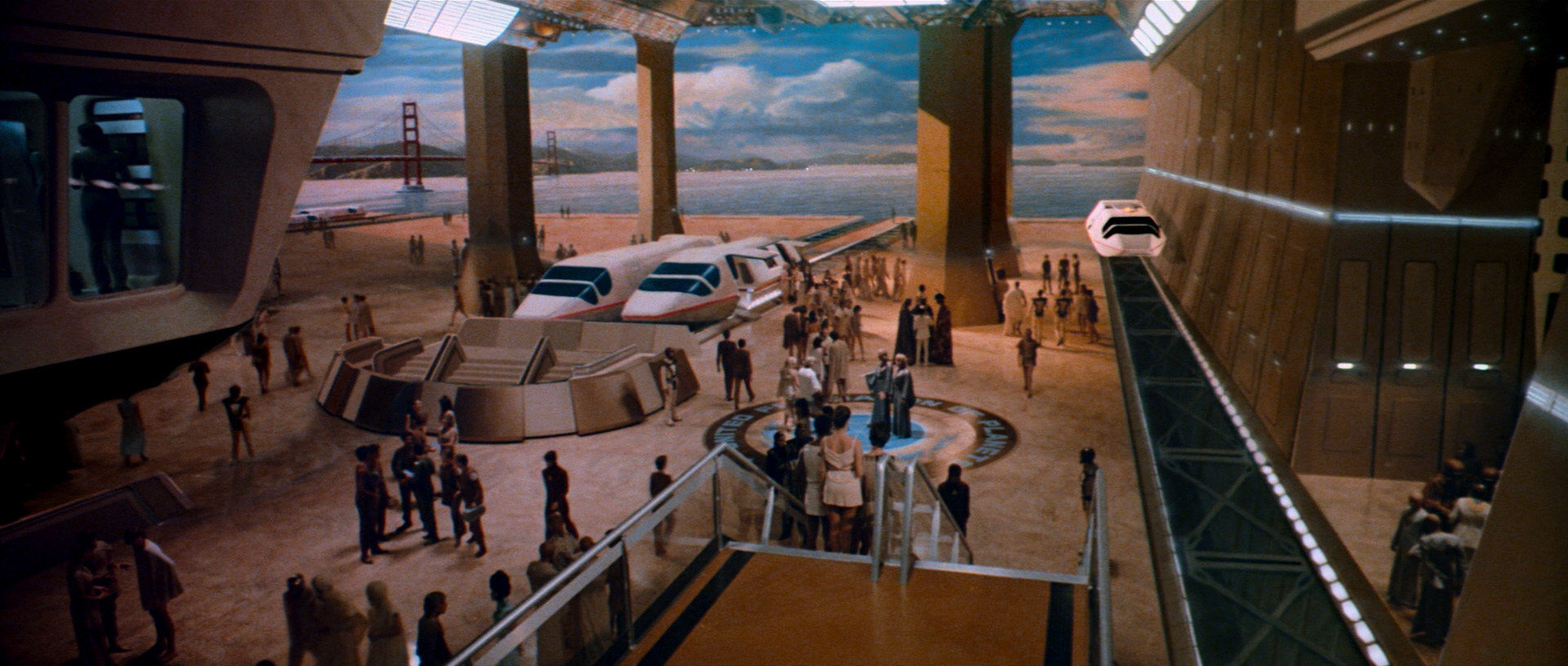
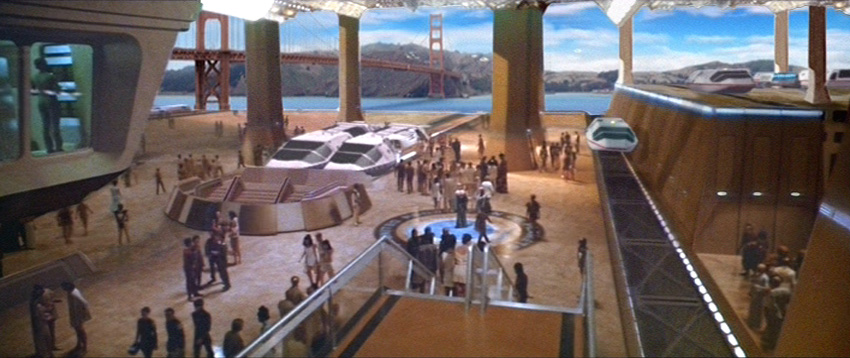
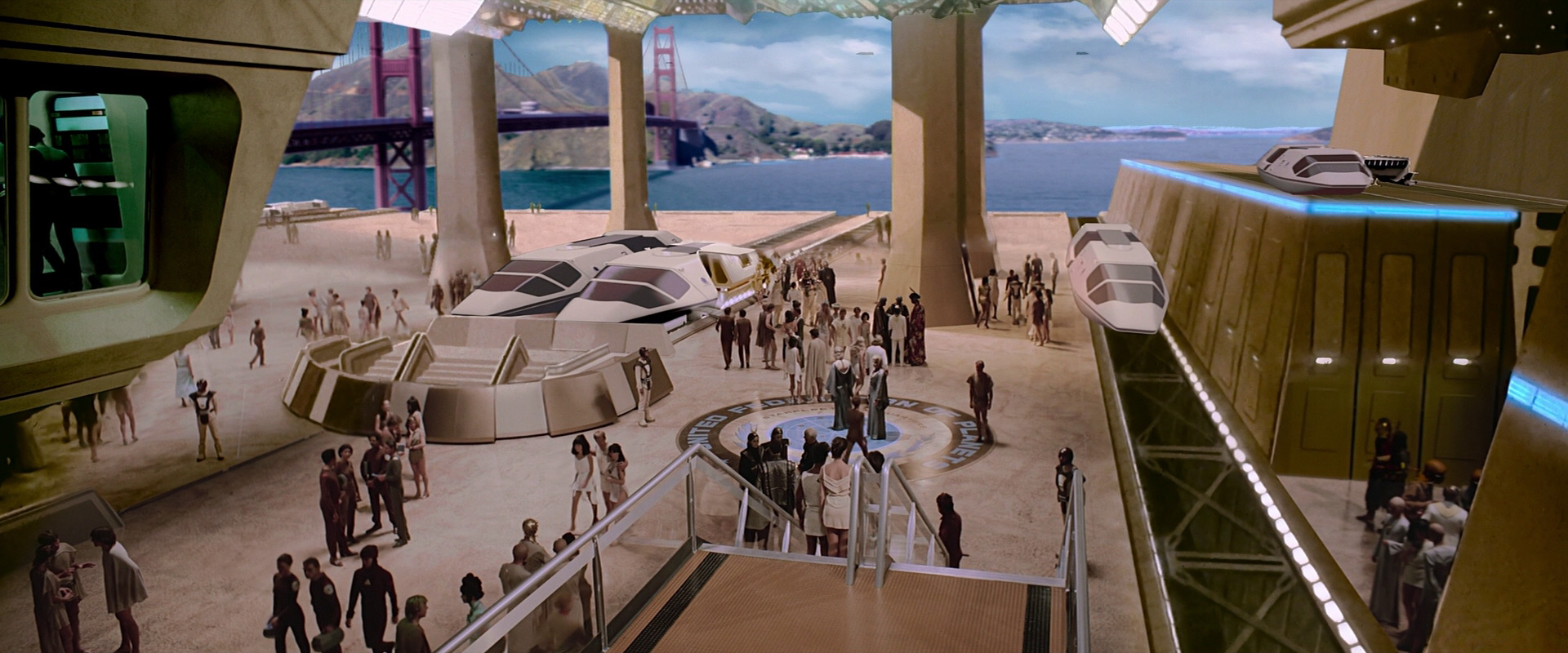
He also brought the Golden Gate Bridge closer to match a new exterior shot of the air tram station. In the original (and 2009 and 2021 Blu-ray) theatrical cut, the station could only be spotted in the far distance. In the 2001 Director’s Edition, it appears next to the bridge.

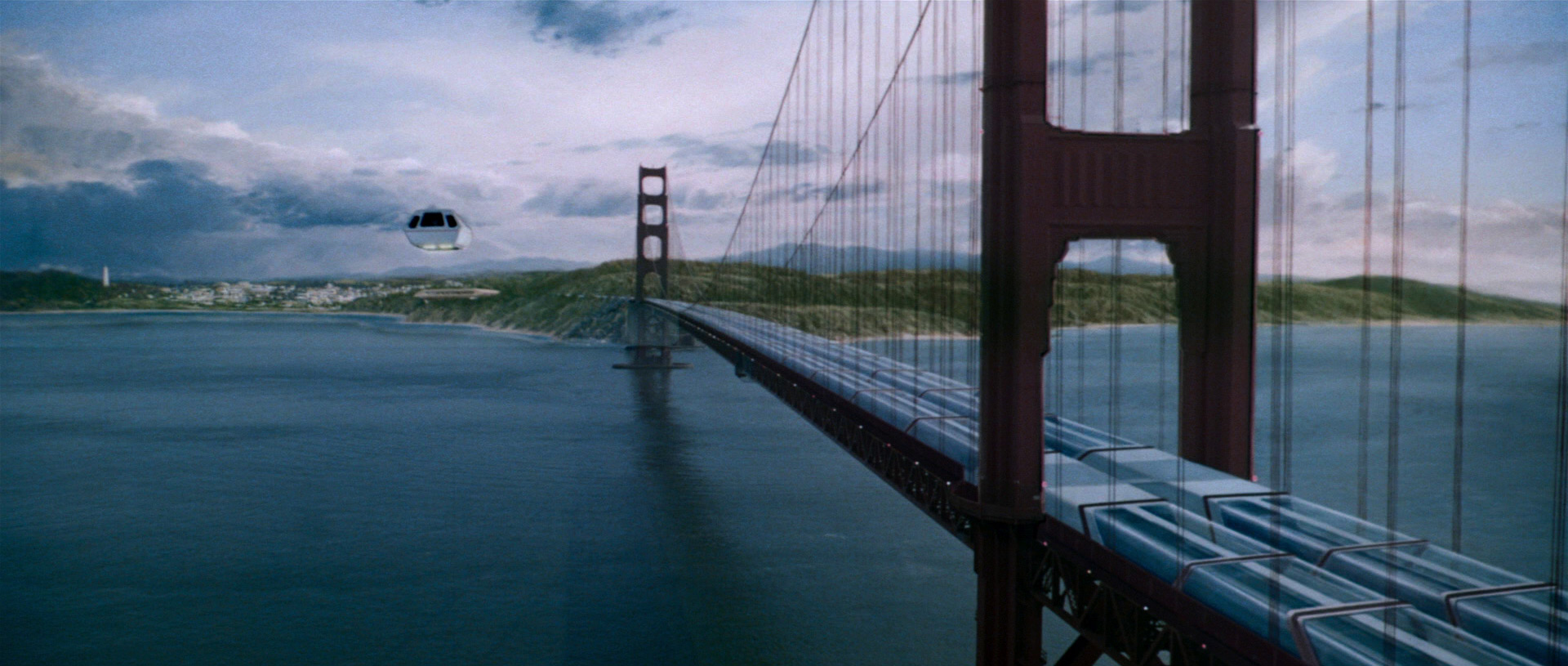
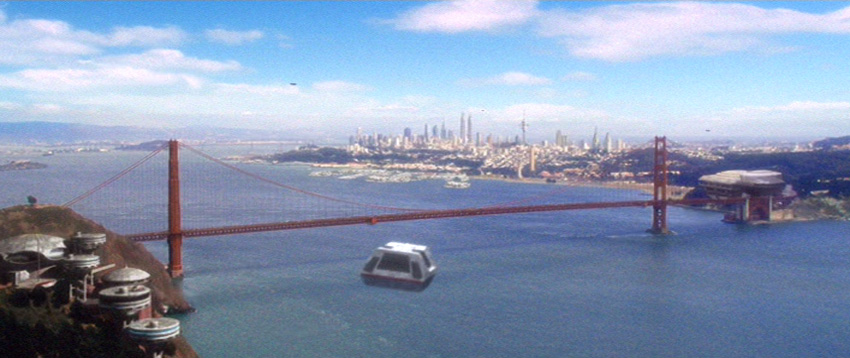
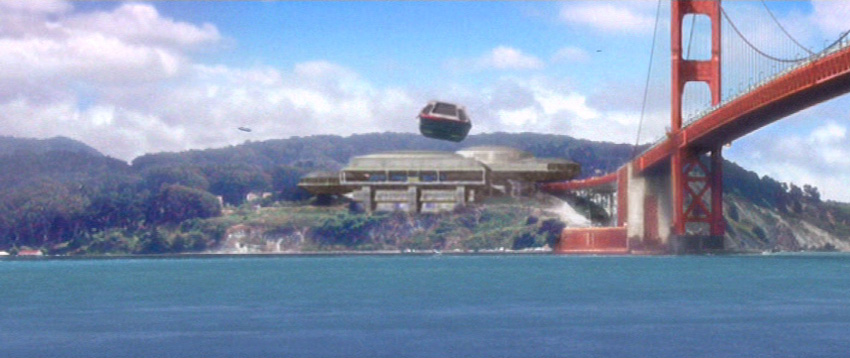
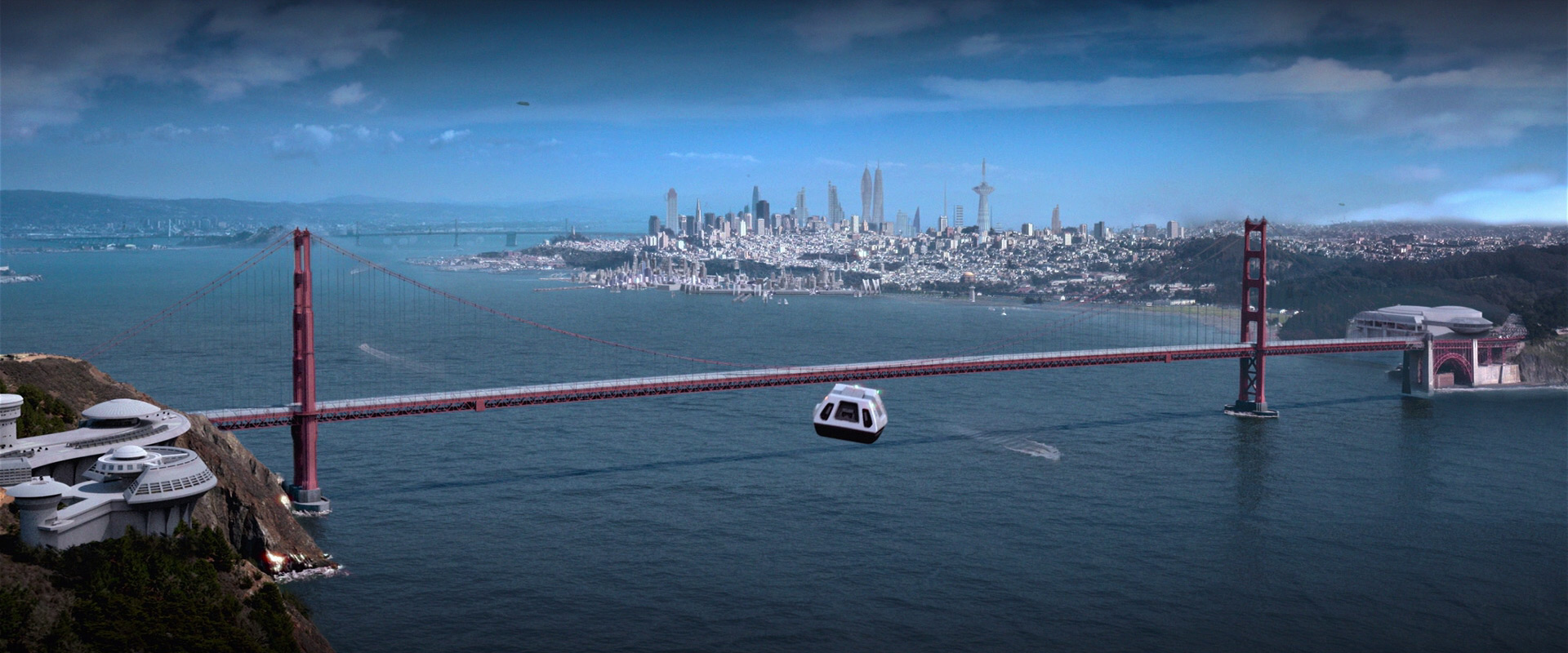
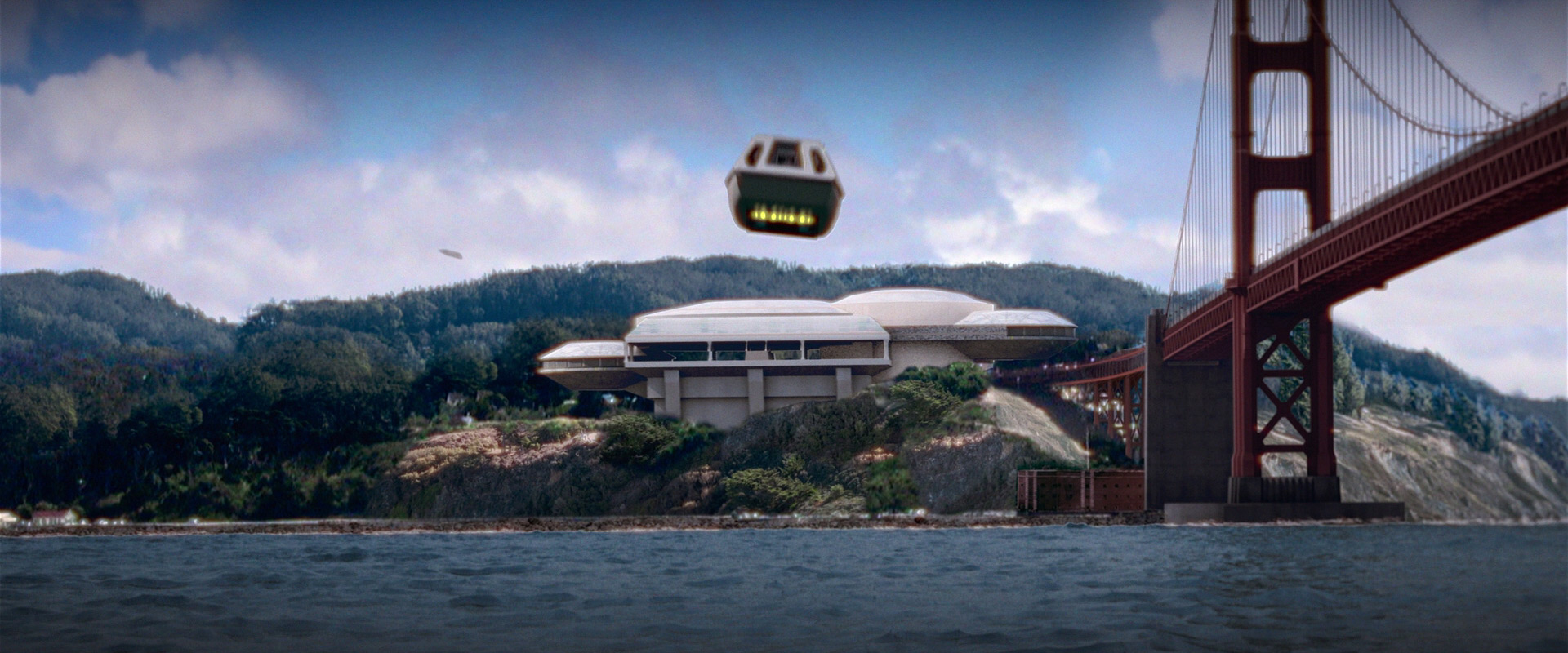
The scene was updated again for the 2022 4K restoration of The Director’s Edition. The air tram station is much sharper and the buildings opposite Golden Gate Bridge have been changed to match those revealed in Star Trek IV.
The Wrath of Khan
Star Trek II featured a brief scene in what was then still called Starfleet Headquarters, but what in retrospect would have been Starfleet Academy: when Kirk exits the simulator, he is handed a birthday present by Spock.
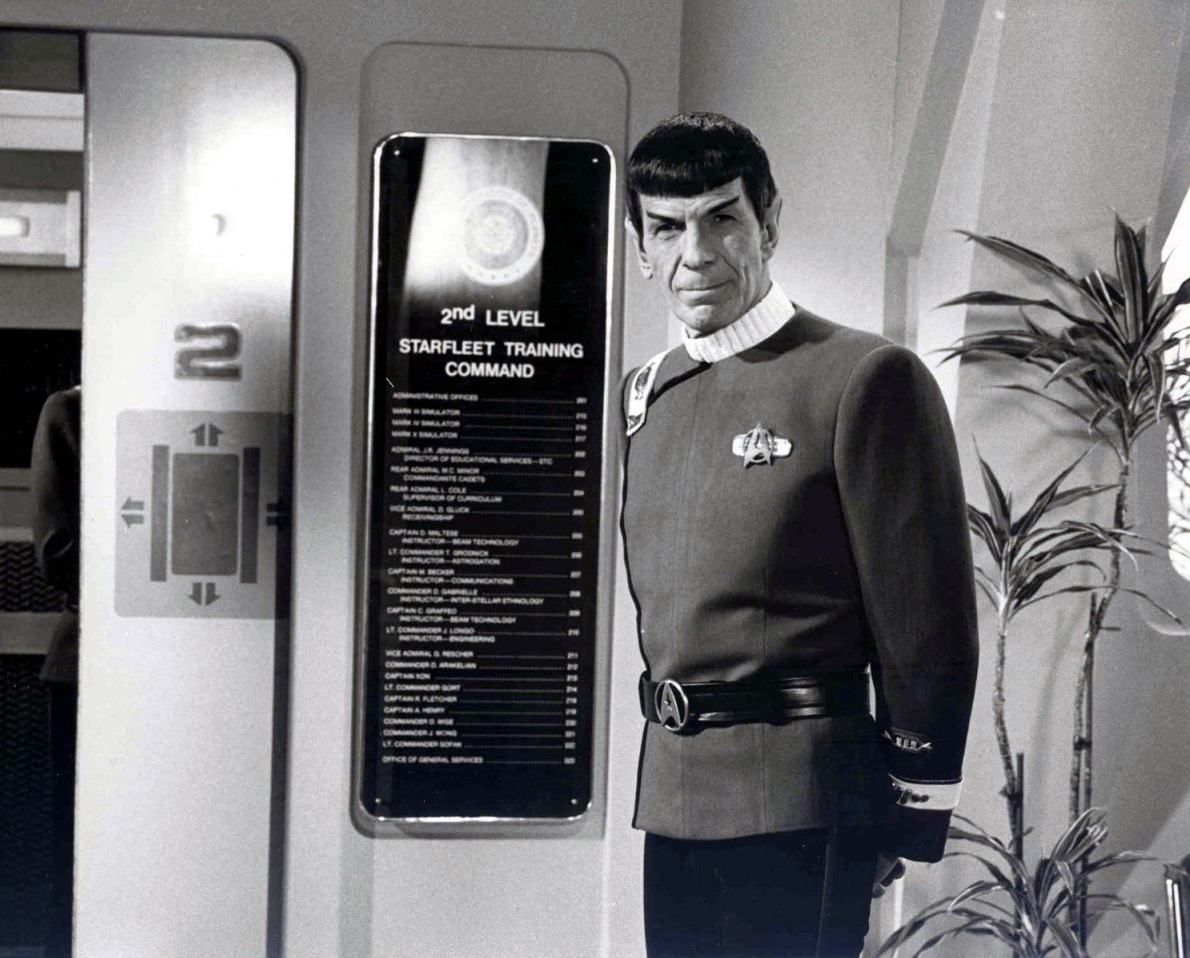


The simple set was even smaller than it appeared on screen. Production Designer Joseph Jennings told Star Trek: The Magazine in 2002 that it was Art Director Mike Minor who came up with the idea:
He went out to several hardware stores and came back with a birdbath, a planter and a bunch of junk. He went off and fiddled with it for about two days and he came up with a miniature. We put that in the foreground as what is called a “cutting piece” and the real set was in the background. They tied together visually and created a perspective trick that made the set look much bigger.
The Voyage Home
Ralph McQuarrie, of Star Wars fame — and who had earlier redesigned the Enterprise for the aborted motion picture Planet of the Titans — provided various concepts for Star Trek IV, including for a Starfleet facility on the northern shore of the Golden Gate, west of the bridge, which clearly inspired the look of the Federation Council in the movie.
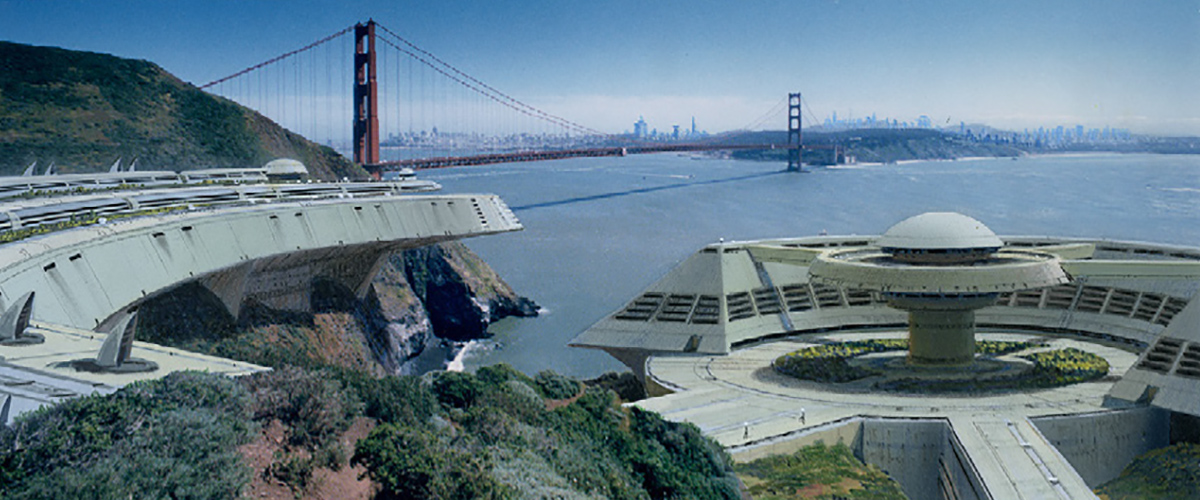
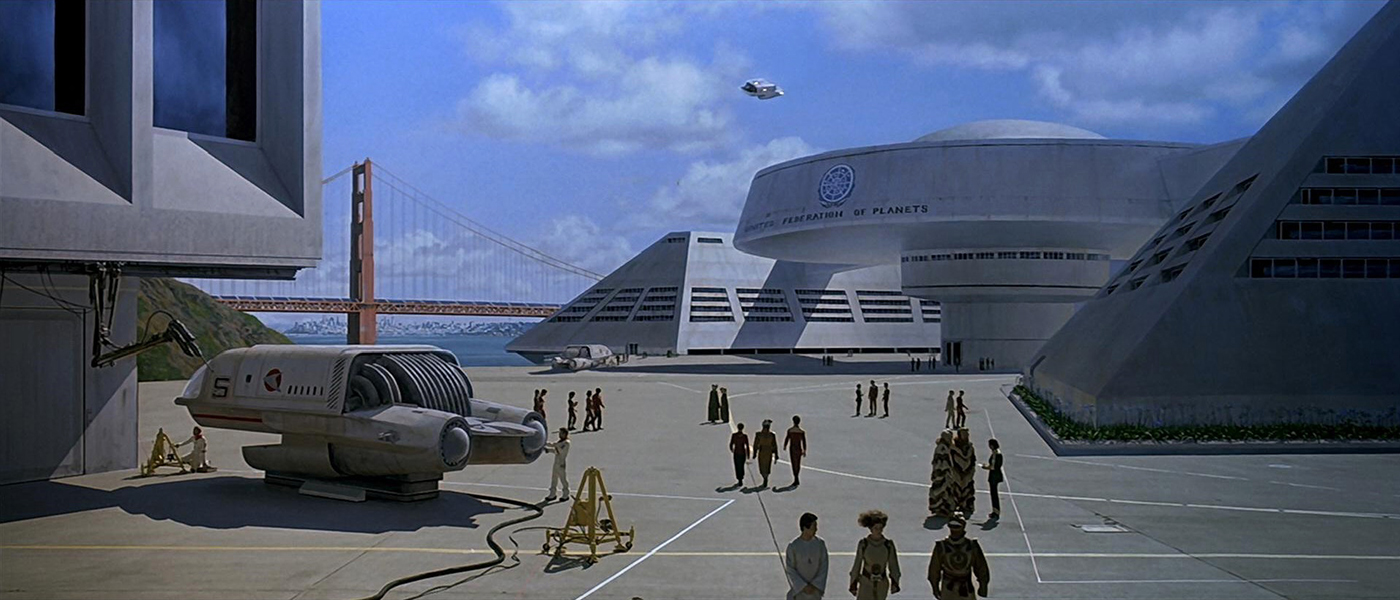
Almost the entire shot was a matte painting. Actors in Starfleet uniforms were filmed walking on a runway at Oakland Airport. Chris Evans of ILM filled in the rest.
To make the sure the actors would be in the right place, the team put tape marks on the ground and even painted hard-edges shadows.
“This was the most planning we’ve done on a matte shot,” Evans told Cinefantastique in 1987.


The actual Starfleet Headquarters was only seen from the inside, in scenes where Fleet Admiral Cartwright (Brock Peters) confers with the Federation president (Robert Ellenstein).
The Next Generation
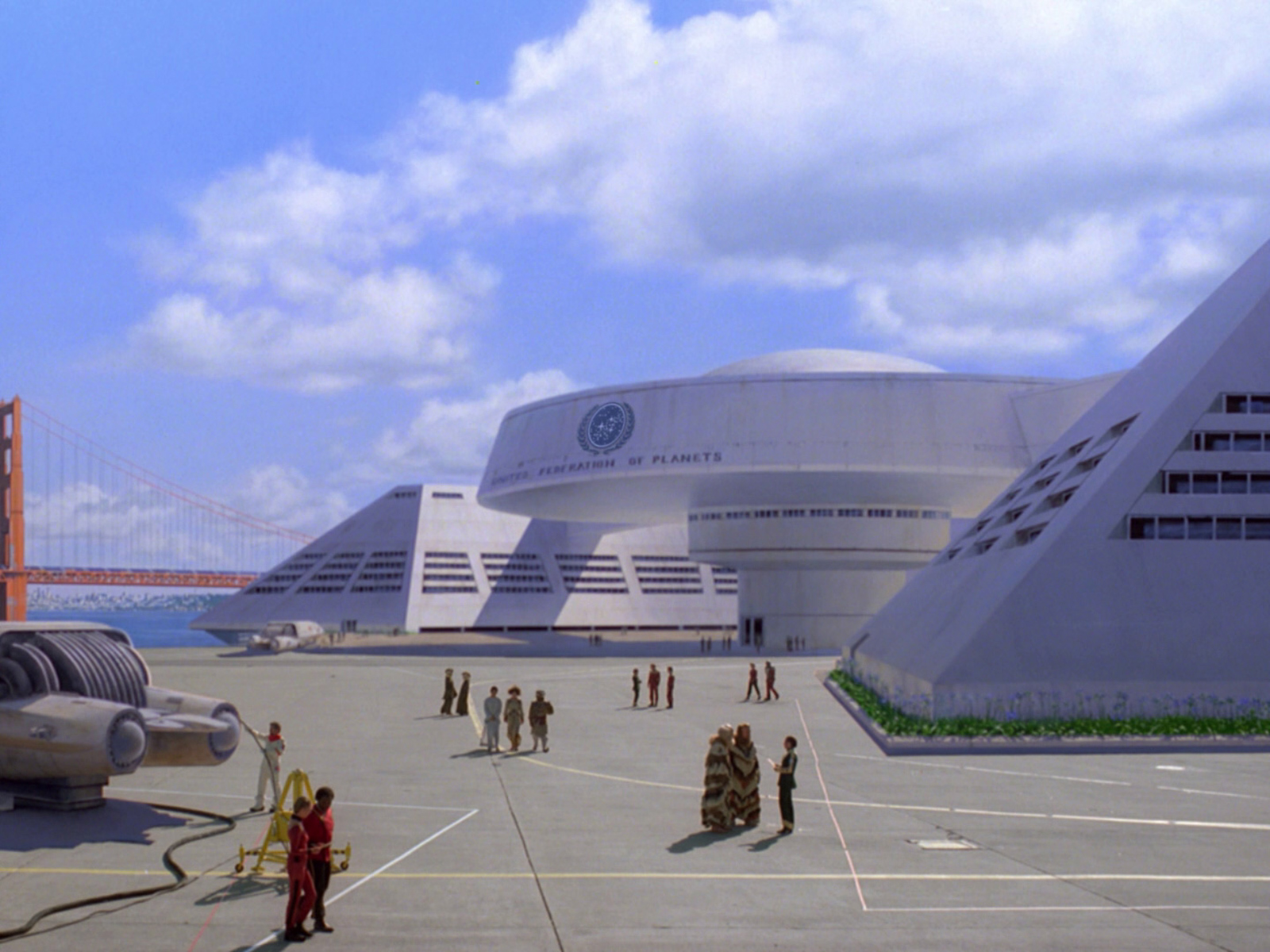
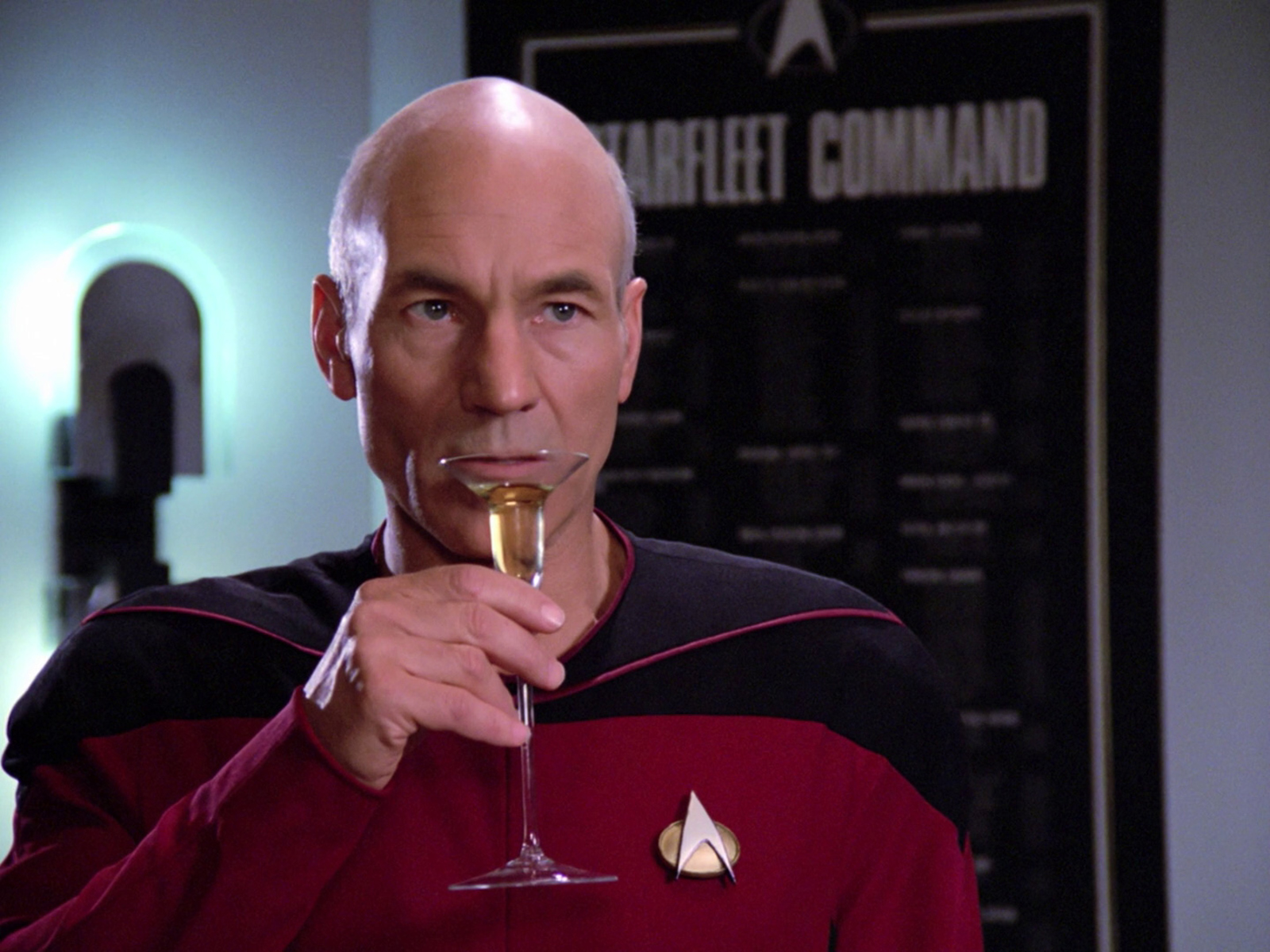
Footage from The Voyage Home was reused in the episode “Conspiracy” of The Next Generation, where the building is meant to house Starfleet Command rather than the Federation Council.
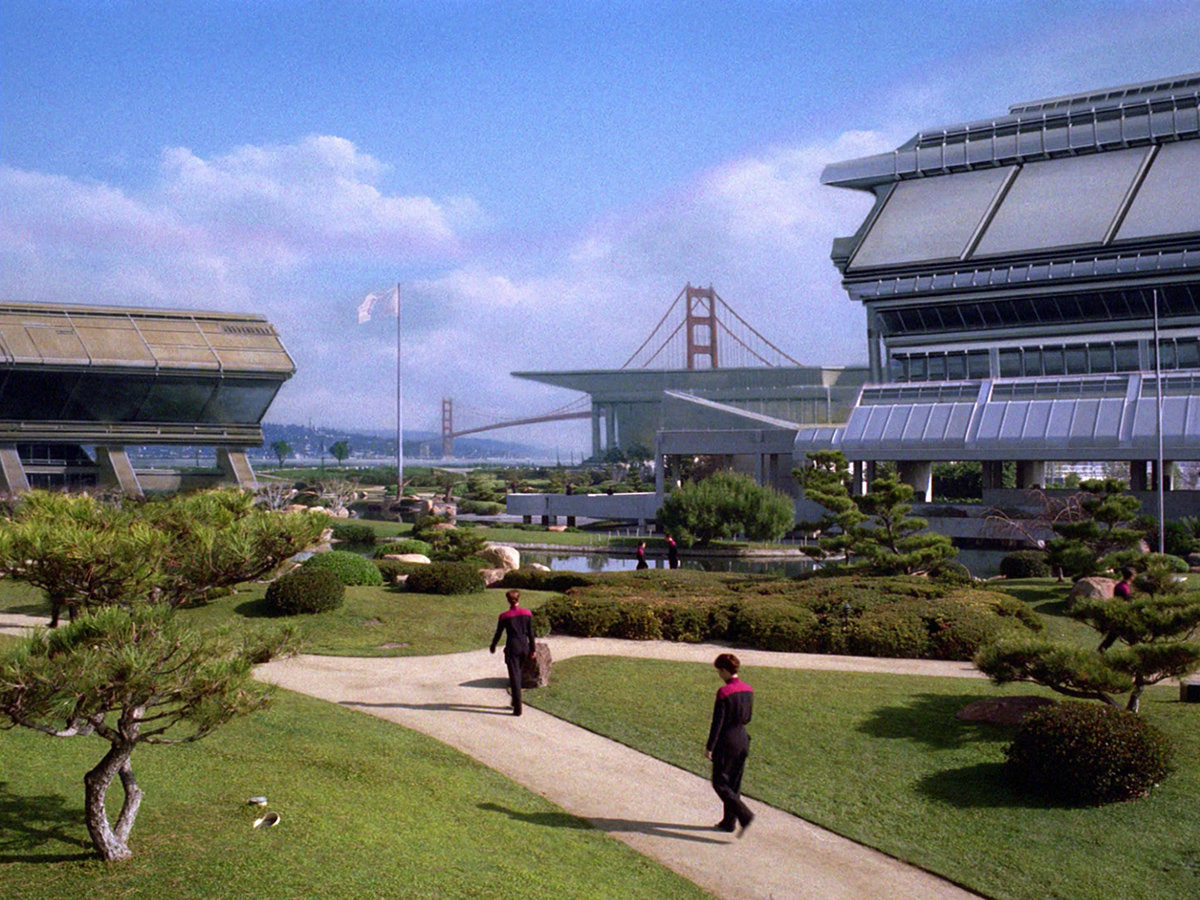
Starfleet Academy first appeared in “The First Duty”. The scenes were filmed at the Japanese Gardens of the Tillman Water Reclamation Plant in Van Nuys, California. The same gardens had been used to depict the planet Rubicun III in “Justice” and would be used many more times to depict Starfleet facilities.
The Golden Gate Bridge in the background puts Starfleet Academy in Horseshoe Bay, north of the Golden Gate and across the water from the building designed by McQuarrie.
The Undiscovered Country
Star Trek VI revealed the outside of the building we had presumably seen on the inside in Star Trek IV (judging by the view from the window behind Admiral Cartwright). This exterior shot were reused in the Voyager episodes “In the Flesh” and “Non Sequitur”.
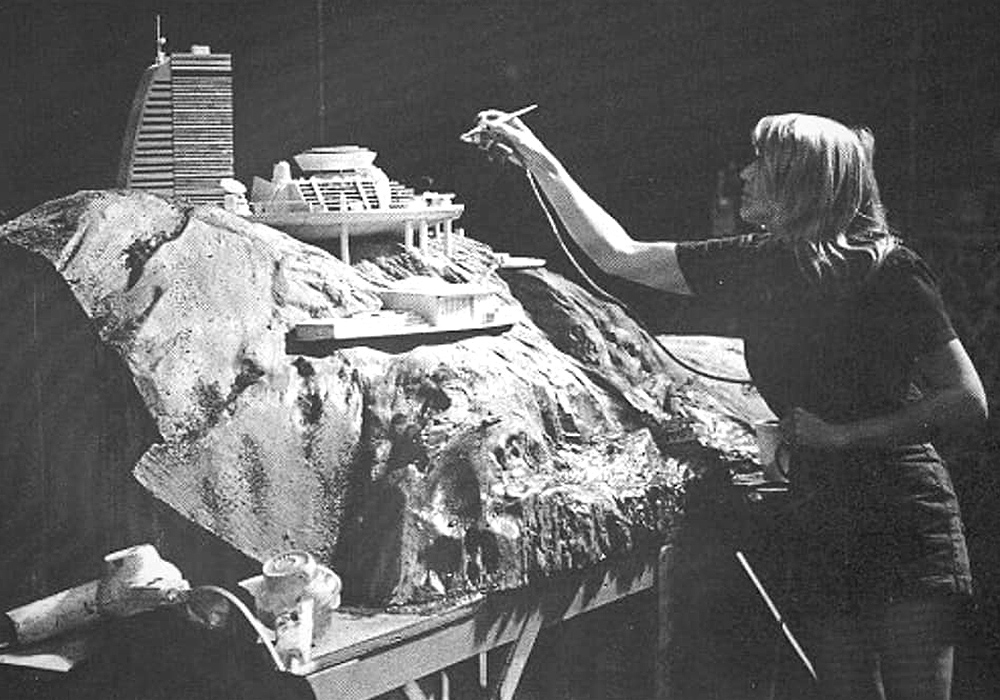
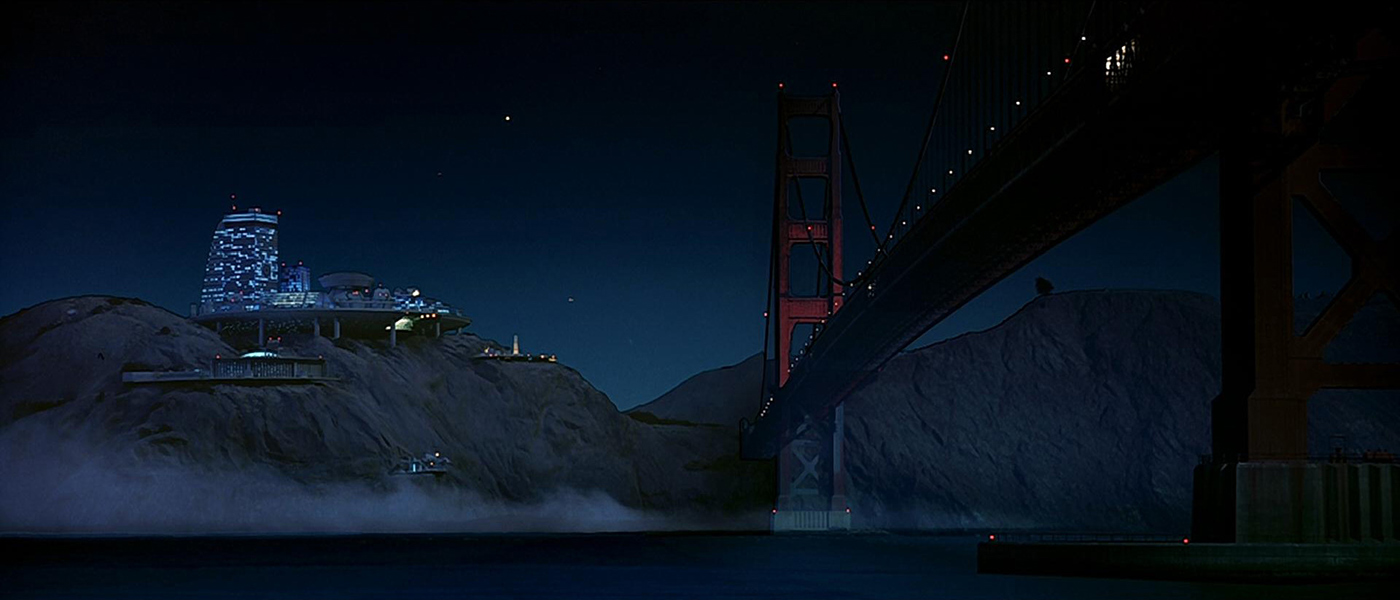
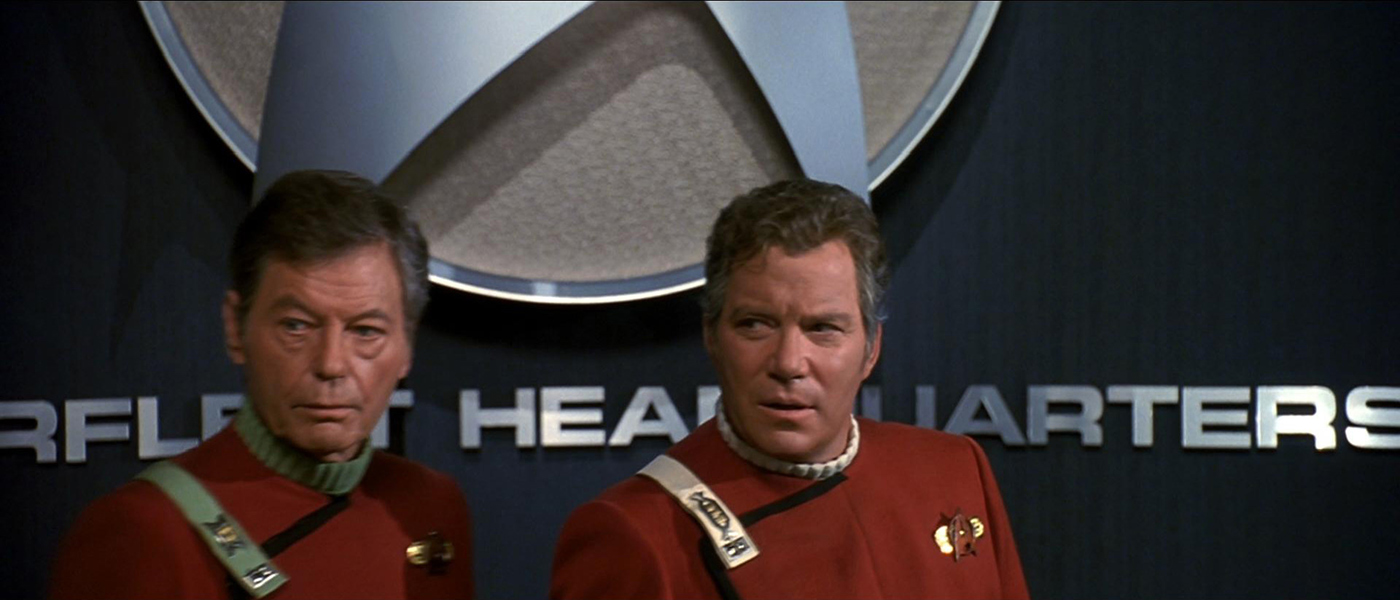
The briefing room scene was filmed inside the First Presbyterian Church of Hollywood on Carlos Avenue, Los Angeles.
Deep Space Nine
Graphic Artist Anthony Fredrickson was tasked with creating a whole new Starfleet Headquarters for Deep Space Nine’s “Homefront”. He was given only a few days and almost no budget.
Doug Drexler suggested taking the General Motors Pavilion of the 1964-65 World’s Fair as inspiration, which he had visited as a child.


Fredrickson told Star Trek: The Magazine four years after the episode was produced:
I had the construction guys cut and shape me an appropriate piece of “wiggle wood”, a bendable kind of plywood. To me, the building’s facade looked like a curving venetian blind. It was a simple matter to walk across the lot and liberate a dusty set of blinds from an empty office. The front of the model was lined with the thin metal slate, and the overall effect was like a tall, narrow, drive-in movie screen, hung with the Federation of Planets logo. At the front of the building, we modeled a park crisscrossed with walkways, and used Micro Machine starships to represent sculptures, like the way a military base will mount an old jet outside the entrance.
A CD storage rack was used to represent a high-speed magnetic tram tunnel.
The perfect tram car was discovered in a plastic and aluminum hanging bird feeder. Its streamlined shape fit nicely in the tunnel, and after a little paint and pinstriping it provided the illusion of expansive windows and sliding doors.
